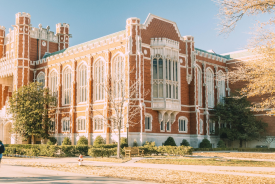United Nations to Organize World's First Asteroid Defense Initiative to Prevent Potential Catastrophic Meteor Collisions
ByThe United Nations will organize the first ever global defense effort to prevent a future catastrophic asteroid collision with Earth, Space.com reported.
Six astronauts and cosmonauts met with U.N. members Friday via news conference hosted by astrophysicist Neil deGrasse Tyson at the American Museum of Natural History in New York.
The goal of the discussion was to address the real dangers posed by near-Earth objects (NEO). Such objects are asteroids floating in space within the radius of Earth's orbit of the sun.
Edward Lu, a former NASA astronaut and co-founder of the non-profit B612 Foundation, said there are nearly a million NEOs that could pose a threat to Earth, but a vast majority of them have not been detected by a telescope.
"Our challenge is to find these asteroids first, before they find us," Lu said.
Lu co-founded B612 with Russell Schweickart in 2002 as an advocate for asteroid defense strategies. Through the foundation, they developed an infrared telescope named the Sentinel Space Telescope with only task of spotting threatening NEOs.
The Sentinel Telescope appears to be a vital part of the U.N.'s defense plan. With the telescope's help, various countries would have time to send the appropriate space team into action to divert the asteroid off course.
"The question is, which way do you move [the asteroid]?" Schweickart, also former NASA astronaut, said in the news conference. "If something goes wrong in the middle of the deflection, you have now caused havoc in some other nation that was not at risk. And, therefore, this decision of what to do, how to do it and what systems to use have to be coordinated internationally. That's why we took this to the United Nations."
With expanding space exploration and the reality check the world received when a truck-sized asteroid exploded over Chelyabinsk, Russia last February, the U.N. decided it was time to act. In the Russian asteroid incident, bits and pieces from the asteroid injured more than 1,000 people and caused several broken windows and damaged cars.
"It did make a difference in policymakers realizing that this is not just a science-fiction concept, or something that will happen in 100 or 500 years in the future," Thomas Jones, former NASA astronaut and senior research scientist at the Florida Institute for Human and Machine Cognition, told Space.com at the news conference. "The fact that it happened right now, I think, enforced the reality."
© 2025 University Herald, All rights reserved. Do not reproduce without permission.








